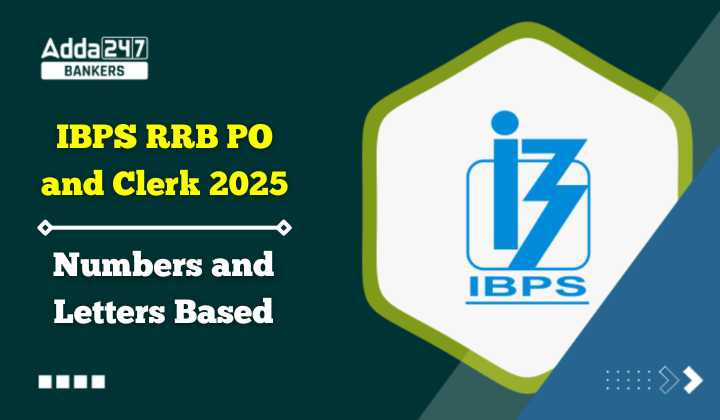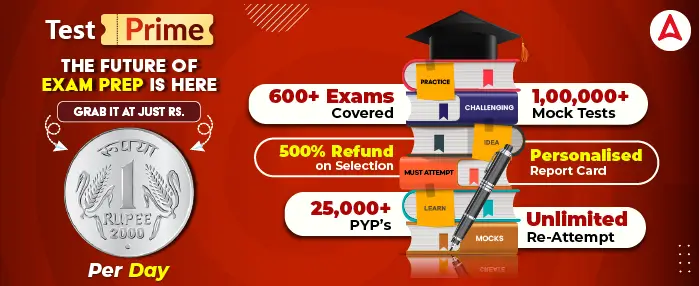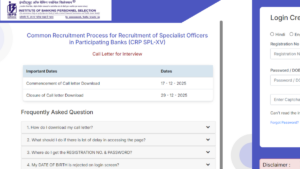Number and Letter-Based Questions are a crucial part of the Reasoning Ability section in competitive exams like IBPS RRB PO and Clerk 2025. These questions test a candidate’s ability to recognize patterns, sequences, and logical connections in combinations of numbers, letters, or both, often requiring quick thinking and sharp observation skills.
Numbers and Letters Based for IBPS RRB PO and Clerk 2025
In the Reasoning section of the IBPS RRB PO and Clerk 2025 examination, one of the key scoring topics is Numbers and Letters-Based Questions. This topic holds significant importance as it frequently appears in the exam and tests a candidate’s ability to identify patterns and logical sequences involving numbers, letters, or a mix of both (alphanumeric series). With the right strategy and regular practice, candidates can solve these questions quickly and accurately, making it an essential topic to focus on during preparation.
What are Number and Letter-Based Questions?
These questions involve sequences or arrangements of numbers, letters, or a combination of both (alphanumeric series). You need to identify the pattern governing the sequence and then answer the question based on that pattern. The questions can be in various formats, such as:
- Finding the next term: You are given a sequence, and you need to determine the subsequent number, letter, or alphanumeric combination.
- Identifying the missing term: A term is missing from the sequence, and you need to find it.
- Finding the wrong term: One of the terms in the sequence does not follow the established pattern, and you need to identify it.
- Based on a given arrangement: You might be given a series of numbers, letters, or both, and questions will ask you to find elements based on certain conditions (Example: How many numbers are preceded by a letter and followed by a symbol).
Types of Number and Letter Based Series:
-
Number Series: These series involve a sequence of numbers following a specific rule, which could be based on:
- Arithmetic operations (addition, subtraction, multiplication, division).
- Squares, cubes, or their variations.
- Prime numbers.
- Combinations of these operations.
- Patterns of differences between consecutive terms.
- Example: 2, 4, 8, 16, ? (Pattern: Multiply by 2. Answer: 32)
-
Letter Series: These series consist of a sequence of letters following a pattern based on their alphabetical order. The pattern could involve:
- Skipping a fixed number of letters.
- Moving forward or backward in the alphabet.
- Using the reverse alphabetical order.
- Example: A, C, E, G, ? (Pattern: Skip one letter. Answer: I)
-
Alphanumeric Series: These series are a mix of letters, numbers, and sometimes symbols arranged in a specific order. You need to identify the underlying pattern that governs both the alphabetical and numerical parts of the sequence.
- Example: A3%, D9G, @5B, ?
How to Prepare for These Questions:
-
Understand the Basics: Familiarize yourself with the English alphabet order and basic arithmetic operations. Knowing squares, cubes, and prime numbers up to a certain limit can also be helpful for number series.
-
Practice Pattern Recognition: The key to solving these questions is to identify the pattern quickly. Practice different types of series to develop this skill. Look for common patterns like constant differences/ratios, increasing/decreasing differences/ratios, and combinations.
-
Break Down Alphanumeric Series: For alphanumeric series, try to analyze the letter and number parts separately. Sometimes, the pattern in the letters and numbers might be independent of each other.
-
Note Positions Carefully: For questions based on a given arrangement, pay close attention to the positions (left, right, from the end) mentioned in the question.
-
Time Management: These questions are generally scoring if you can identify the pattern quickly. Practice solving them within a time limit to improve your speed.
Number and Letter Based Series Questions:
Directions (01-05): These questions are based on the following alphabet and digit series.
D 5 P K L 8 Z M C I 6 O Q U E 1 T N R 4 G B A 9 F S W 2 H J V 7 Y X 3
Q01. How many digits are there in the above arrangement which is immediately followed by a vowel?
(a) Two
(b) Four
(c) One
(d) Three
(e) None
Q02. If all the vowels are deleted from the above arrangement, then which of the following letters/digits is 10th to the left or 5th from the right end?
(a) R
(b) 4
(c) G
(d) 9
(e) None of these
Q03. Which of the following letters/digits is 7th to the right of 13th from the right end?
(a) A
(b) 2
(c) H
(d) 9
(e) None of these
Q04. How many consonants are there in the above arrangement which is immediately preceded by a consonant and immediately followed by a vowel?
(a) Four
(b) Three
(c) Two
(d) One
(e) None
Q05. Which of the following elements is exactly between ‘B’ and ‘2’ in the given arrangement?
(a) 9
(b) F
(c) S
(d) W
(e) None of these
Q06. How many pairs of letters are there in the word “ADEQUATE” each of which have as many letters between them as they have between them in the English alphabetical series?
(a) Three
(b) One
(c) Two
(d) More than three
(e) None
Q07. If in the number ‘63143214’, addition of 1 after multiplying by 2 in each of the odd digit and subtract 3 after multiplying by 2 in each of the even digit then, How many digits are repeating in new number?
(a) Three
(b) One
(c) None
(d) Two
(e) Four
Q08. Which of the following elements should come in a place of ‘?’ ?
JQ4 HS9 FU16 ?
(a) EV36
(b) PK 81
(c) IR 100
(d) DW25
(e) LO 49
Q09. Arun’s ranked 38th from the top and 44th from the bottom in a class. How many students are there in the class?
(a) 82
(b) 77
(c) 81
(d) 79
(e) None of these
Q10. If in the number ‘867351429’, all digits are arranged in increasing order from right to left than how many digit remain same place in the new arrangement?
(a) Three
(b) Four
(c) None
(d) Two
(e) One
| Related Posts | |
| IBPS RRB Notification 2025 | |
| IBPS RRB Clerk Cut Off | IBPS RRB PO Cut Off |
| IBPS RRB Clerk Salary | IBPS RRB PO Salary |
| IBPS RRB PO Syllabus | IBPS RRB Clerk Syllabus |
| IBPS RRB Previous Year Papers | |




 IB Security Assistant Result 2025 Out at...
IB Security Assistant Result 2025 Out at...
 The Hindu Review November 2025, Download...
The Hindu Review November 2025, Download...
 IBPS SO Interview Call Letter 2025 Out a...
IBPS SO Interview Call Letter 2025 Out a...







